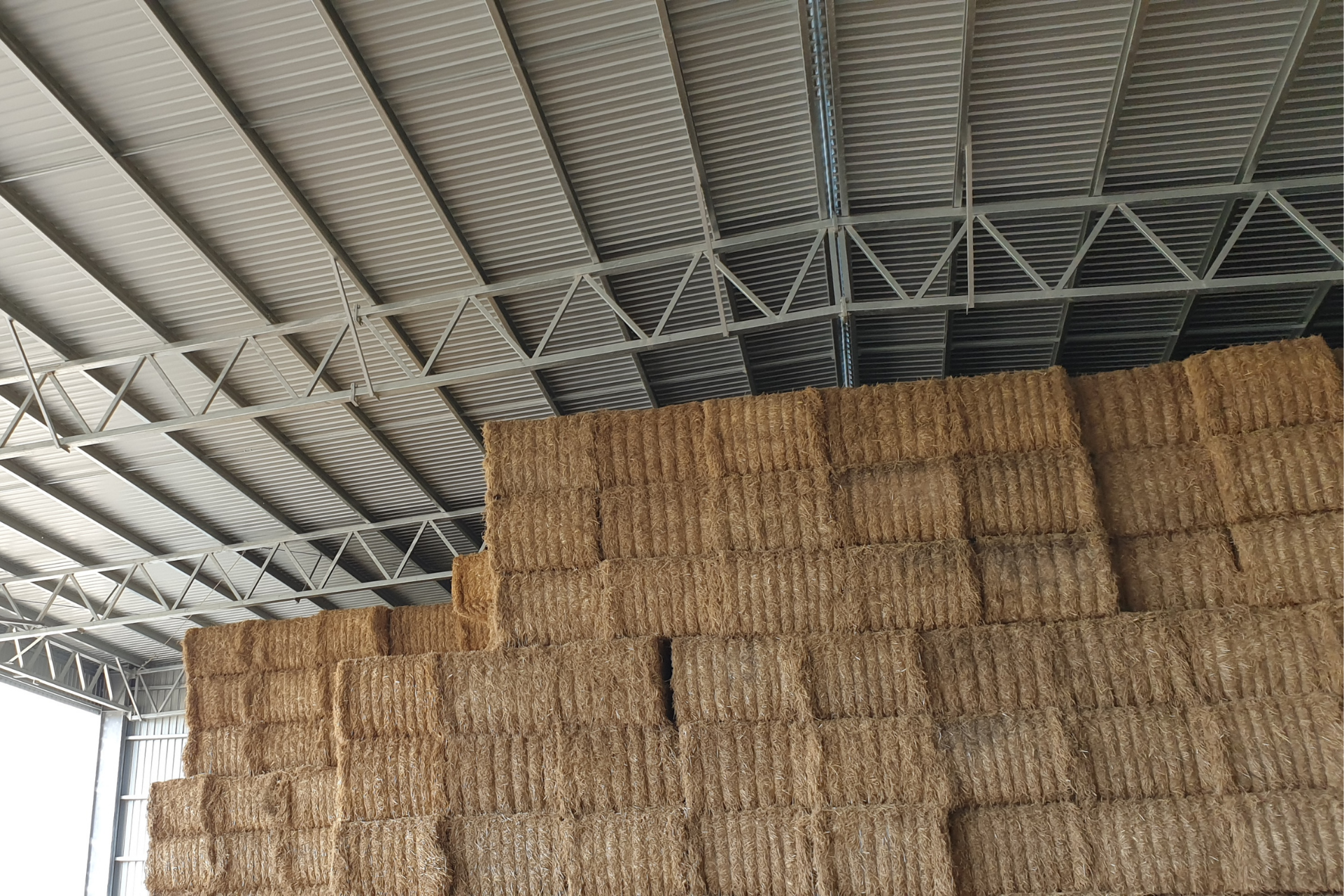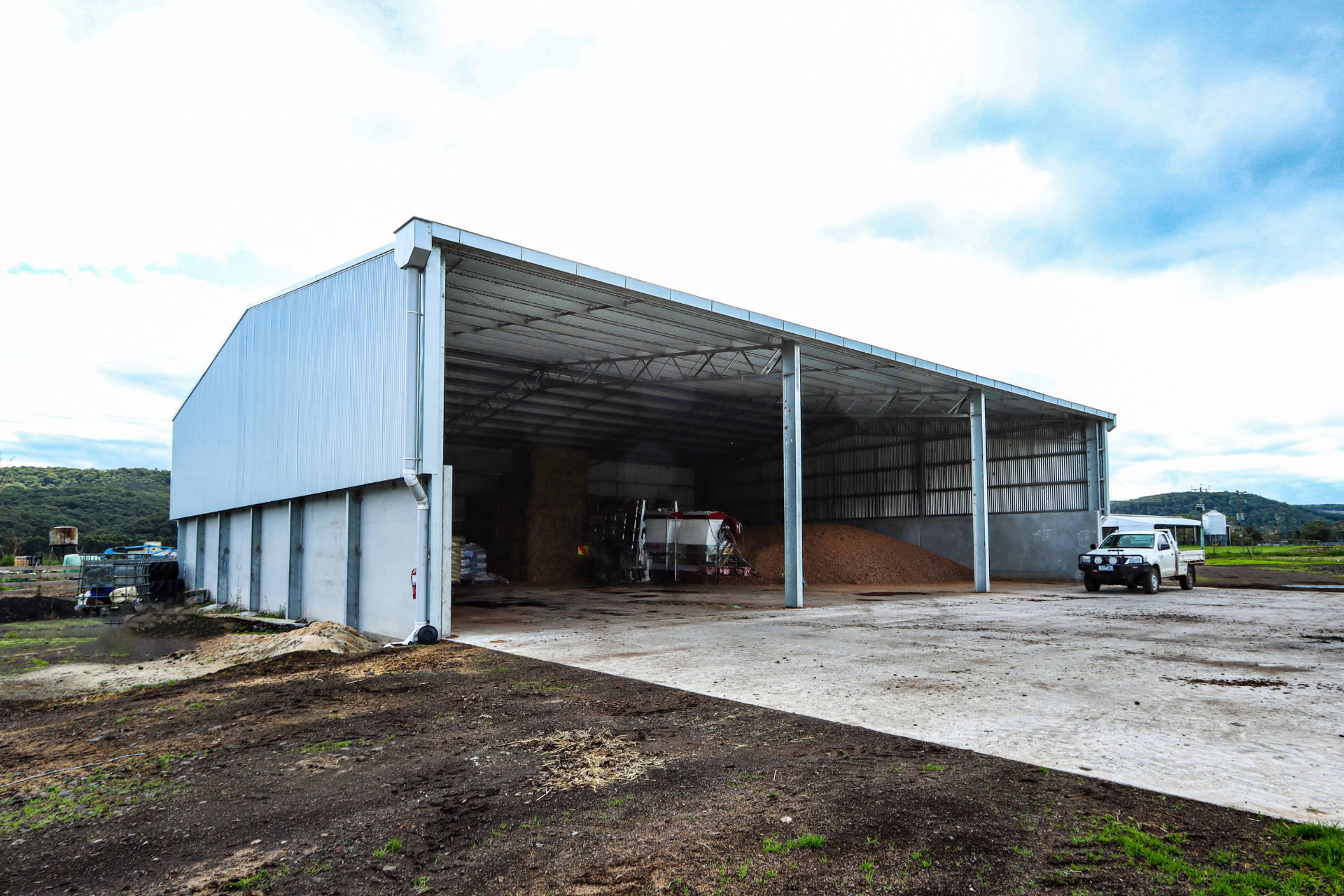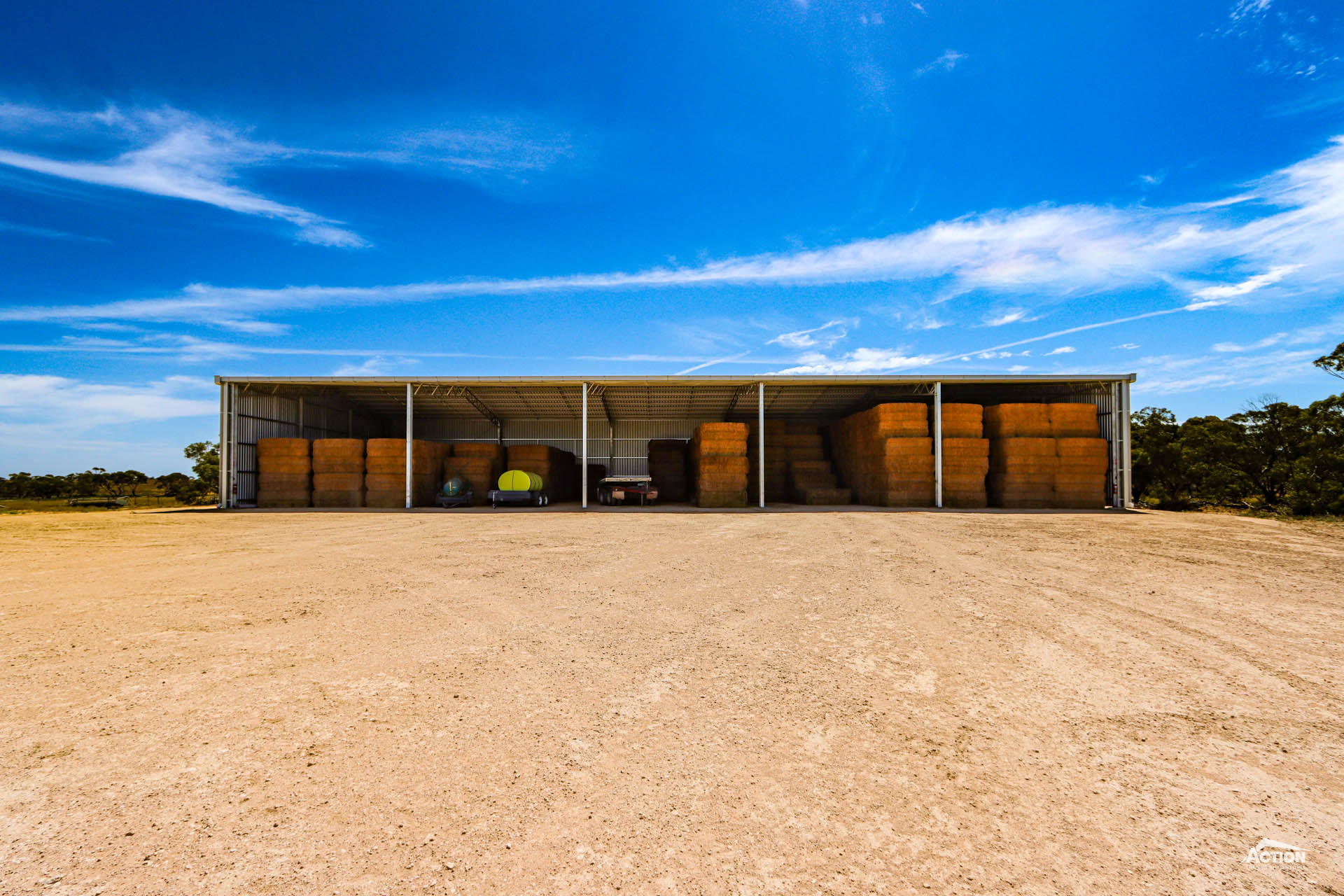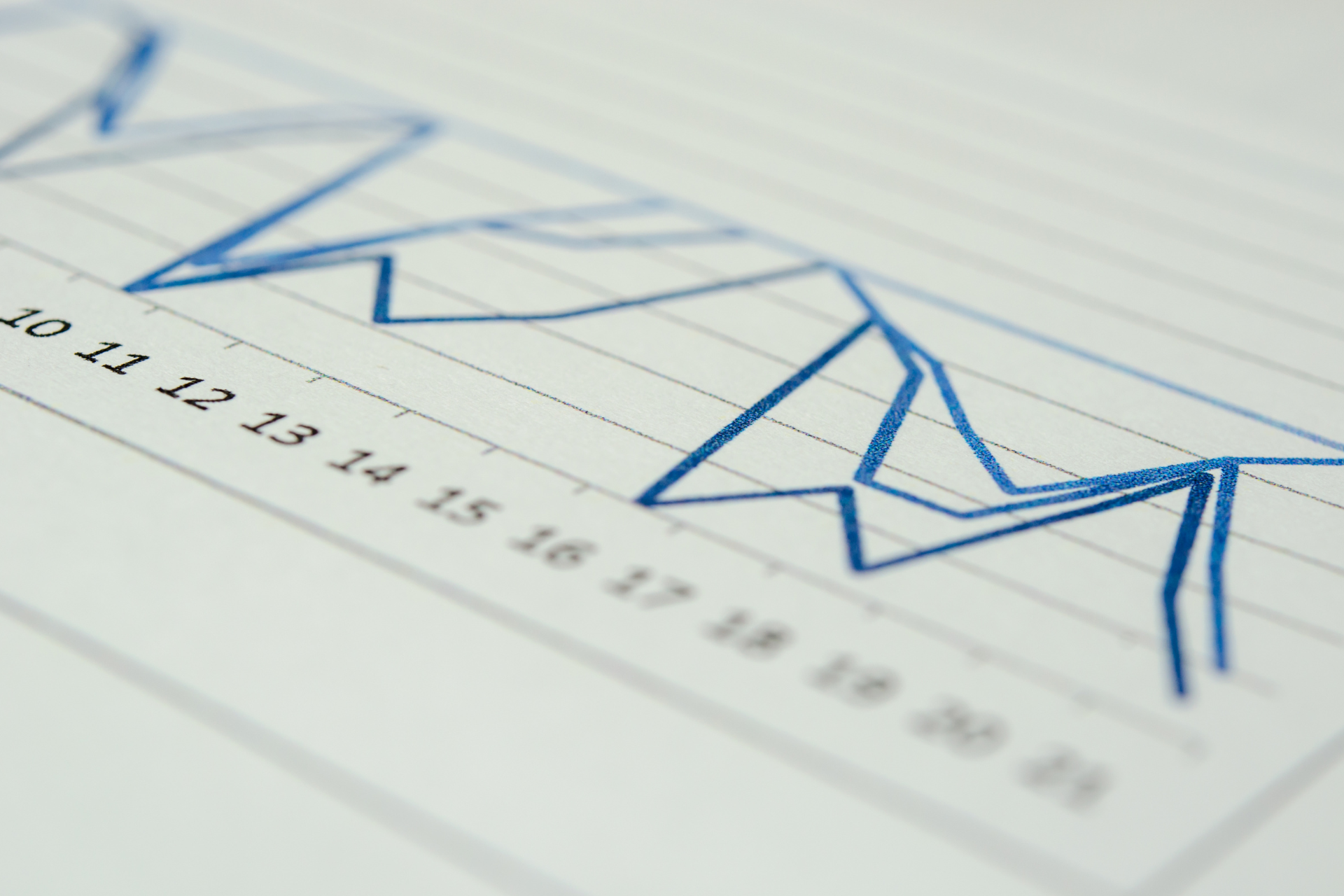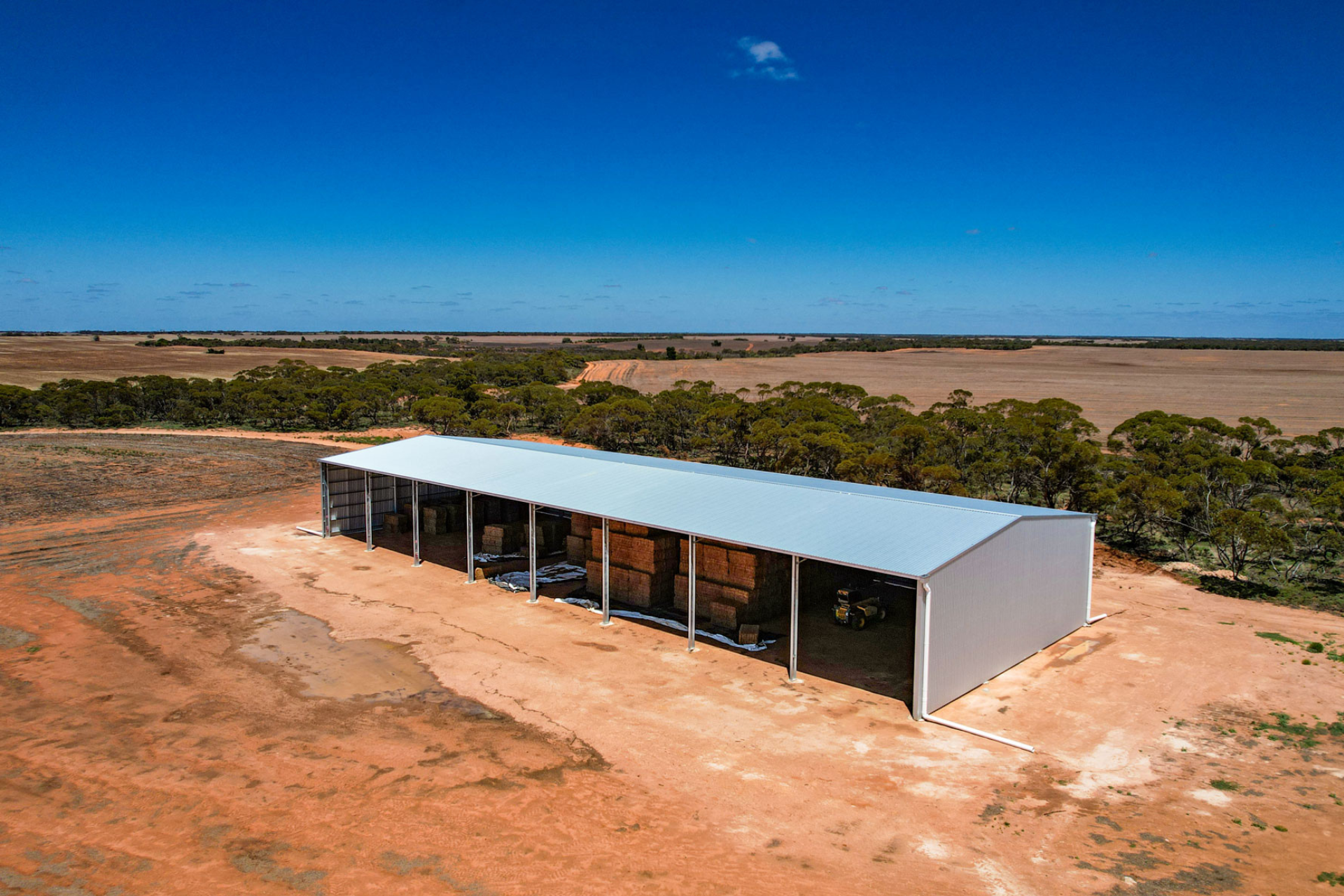If you need a new shed to store your hay you have probably wondered about the cost to build a hay shed.
This article discusses all the factors that influence the price including hay shed size and hay shed design. Most importantly this article answers the question – How much does it cost to build a hay shed? So, if you’re looking for information on hay shed prices, you have come to the right place!
Keep reading to learn about hay shed prices (what makes them go up and what makes them go down), ways you can save money on your project and how much you can expect to pay for a new hay shed build.
Let’s get straight into it.
How much does it cost to build a hay shed?
The average price of a new hay shed build is around $130,000 including GST, footing concrete and erection costs.
Obviously, this average price covers a wide range of hay shed projects with varying sizes (such as large-scale sheds for growers or smaller sheds for fodder storage for livestock), configurations and design features, so please keep this in mind.
To give you a more accurate indication of hay shed prices and to show how prices vary from project to project, read on to learn about popular hay sheds sizes and how much you can expect to pay for them.
Popular hay shed sizes and prices
Here are some of the most popular hay shed sizes and configurations and the approximate price for each, which includes GST, footing concrete and erection.
- A three-sided ‘open-front’ 24 x 15m x 6m hay shed costs approx. $60,000 – $85,000. (Stores 648 big square bales.)
- A three-sided ‘open-front’ 32m x 18m x 6m hay shed costs approx. $90,000 – $120,000. (Stores 1008 big square bales.)
- A three-sided ‘open-front’ 40m x 18m x 6m hay shed costs approx. $110,000 – 140,000. (Stores 1260 big square bales.)
- A three-sided ‘open-front’ 32m x 21m x 6m hay shed costs approx. $110,000 – $140,000. (Stores 1224 big square bales.)
- A three-sided ‘open-front’ 48m x 24m x 7.5m hay shed costs approx. $175,000 – $225,000. (Stores 2280 big square bales.)
- A three-sided ‘open-front’ 48m x 24m x 7.5m hay shed with 6 metre canopy costs approx. $210,000 – $260,000. (Stores 3456 big square bales)
- A three-sided ‘open-front’ 64m x 24m x 7.5m hay shed costs approx. $225,000 – $280,000. (Stores 3648 big square bales.)
- A three-sided ‘open-front’ 80m x 24m x 7.5m hay shed costs approx. $270,000 – $350,000. (Stores 4560 big square bales.)
- A three-sided ‘open-front’ 72m x 27m x 7.5m hay shed costs approx. $270,000 – $350,000. (Stores 4536 big square bales.)
The reason we have provided an approximate price range is because details like site location will be different for every project, but we hope that you find this to be a useful price guide and that it helps you budget for your hay shed build.
Factors that influence the price of a hay shed
There are a number of factors that will influence how much your hay shed costs with the main factors including the shed size, the shed configuration, the materials used and the design features you choose to include. We explain each of these in more detail below. 0
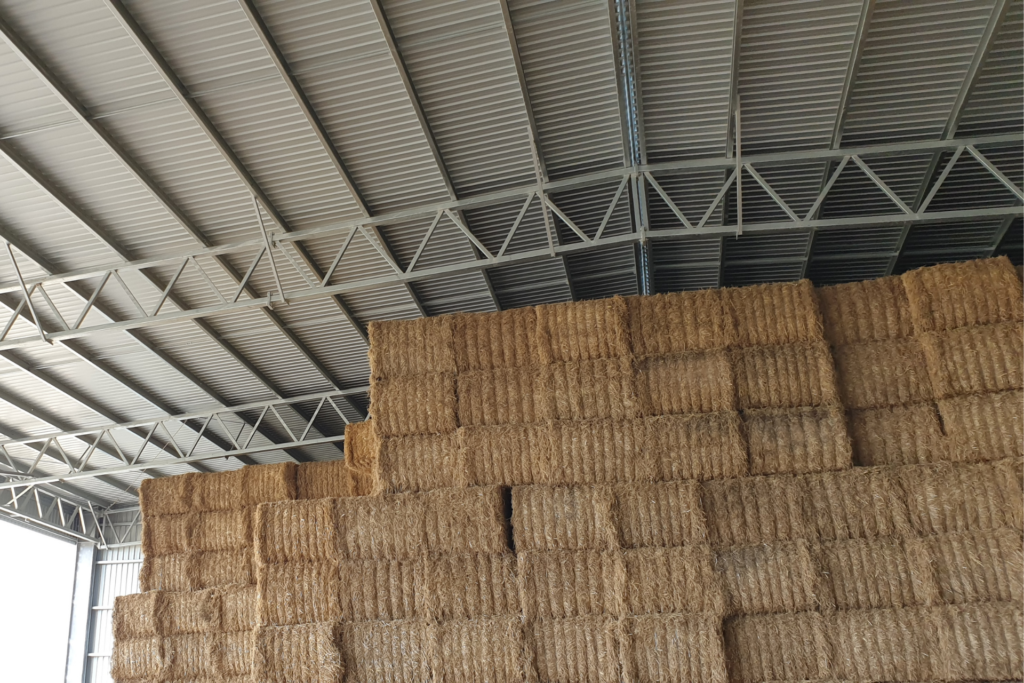
1. Size
Over the past few years, the average size of hay sheds has increased and wider bay spacings have grown in popularity.
This trend can largely be attributed to the fact that bigger bays are safer and more practical, making loading and unloading a shed easier and less stressful which has been a priority for many farmers. However, the trend has also meant that the hay shed costs mores, simply because the bigger the shed, the more labour and materials required.
That is not the only way that the size of your hay shed will impact the project price, though.
Larger hay storage sheds (usually over 2000m²) will require a more detailed fire design which can incur additional costs, for example the installation of water
tanks. It is a good idea to keep in mind fire design and permit costs during the planning stage so that they don’t come as a surprise later in the project. The team at Action Steel can arrange both the permits and fire design for your hay shed project and can provide an indication of how much they will cost to help with your budgeting.
It is worth noting that while the overall project cost of a large hay shed will be more that a smaller hay shed build, a larger shed can work out to be more cost-effective with a lower cost-per-bale. This does usually depend on the bay spacing (for example an 8.5 metre bay will use the same amount of purlins as an 8 metre bay) and the configuration, which leads us to our second influencing factor – configurations.
2. Configuration
Generally, choosing to build a wider shed will cost more than a longer shed and will be less cost-effective per bale. This is because a wider shed not only takes more time to fabricate but it also requires heavier steel than a shed with a smaller span. So, certain sizes and configurations will be less cost-effective than others.
3. Design
Customising your hay shed project with additional design features such as a canopy, girder trusses or a custom gutter system will increase the overall cost of the shed build.
However, you may find that the advantages of these features outweigh the cost. For example, a custom gutter system prevents downpipes being damaged and having to be replaces and can also allow you to harvest an impressive amount of rainwater off your shed roof. You can use this rainwater calculator to find out how much run-off you can expect to capture off your hay shed roof.
Similarly, a cantilevered canopy provides additional weather protection and an undercover area for loading and unloading trucks. A canopy is also a cost-effective way to cover more bales without increasing the size of the shed.
4. Materials
The materials used in your hay shed build obviously also contribute to the cost of your project, this includes the structural steel, corrosion protection coatings and the cladding you choose.
Firstly, hay sheds built by Action Steel include heavy-duty UB columns and open-web trusses manufactured from Australian-made steel. So any rise or fall in steel prices will influence the cost to build a hay shed.
You can read more about 2023 steel prices in this article – Are Steel Prices Decreasing?
While we can’t influence the global steel market, if steel prices do rise there are some ways we can pass savings onto you. This includes negotiating with our steel suppliers, holding higher levels of stock and forward planning our steel purchases.
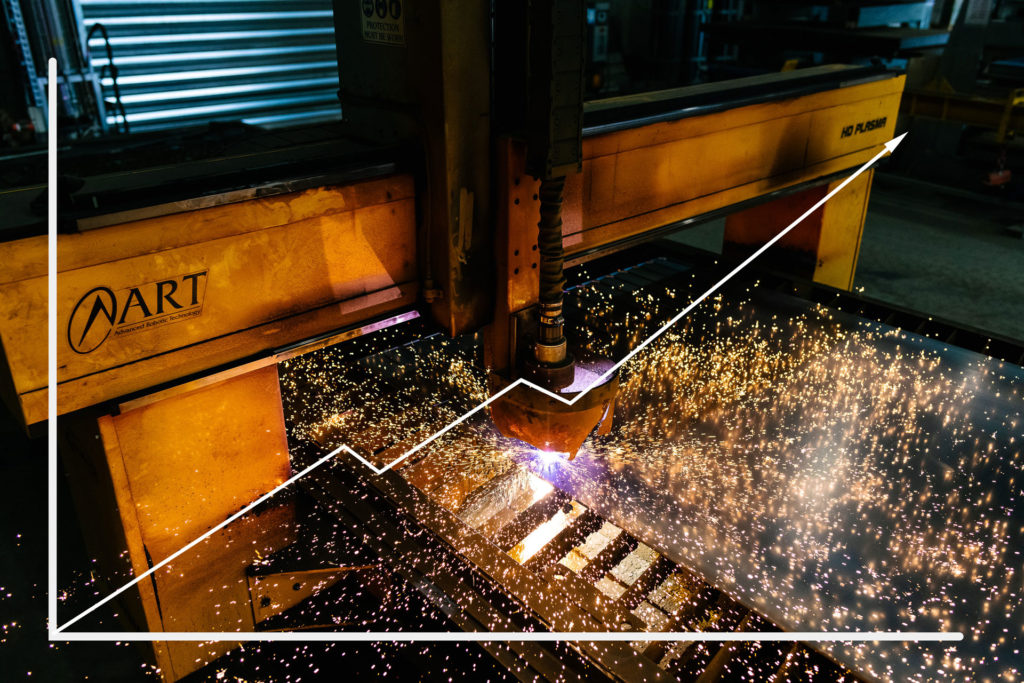
The volatility of the steel market also influence the cost of cladding, and the cladding that you choose for your hay shed project will influence how much your project costs. There are two main cladding options: zinc and Colorbond. Zinc is the less expensive cladding option and is used in the majority of farm shed builds, particularly hay sheds, grain sheds, machinery sheds, shearing sheds and yard covers.
The other material cost to consider is the cost of corrosion protection for the steel. An Action Steel hay shed is fully hot-dip galvanised after manufacture – both the columns and trusses. While this provides the most effective corrosion protection possible, it is also the most expensive option in the short-term. However, compared to a painted or pre-galv coating, hot-dip galvanising not only provides the ultimate corrosion protection but also has the lowest long-term cost of all the coating options. Win-win!
So now that we understand the key factors that influence hay shed prices, let’s discuss some potential cost-saving opportunities.
How can I save money on my hay shed project?
While it may be tempting to take shortcuts in order to save money, the end result is usually a lower quality hay shed or a frustrating lack of storage space. There are several ways you can save money on your hay shed project without these problems though, some of which we have briefly mentioned already. These include choosing a ‘standard’ span and building your shed so that it can be easily extended in the future.
Here are six ways you could potentially save money on your hay shed.
1. Choose a ‘standard’ span
Choosing a ‘standard’ shed span for your hay shed project can be a significant cost-saving as it means a new jig doesn’t have to be set up specifically for your project. So, where practical we recommend that you choose a span from this range.
Our standard spans include a range of practical sizes suited to hay sheds including 18 metres, 21 metres, 24 metres, 27 metres, 30 metres and 36 metres – right through to 60 metres clear span.
2. Choose a configuration with a low cost-per-bale
As we have already mentioned, a longer shed is usually more cost-effective to build than a wider shed. We can quote as many different hay shed options as you need and break the price down to a cost-per-bale figure to help you decide which size will work best for you.
3. Choose wider bay spacings rather than girder trusses
If easy access to your hay shed is a priority for you, opting for a wider bay spacing (such as 9 metres or 10 metres) is usually less expensive than using girder trusses for double-bay openings. This is because a girder truss is more labour intensive and requires heavier material.
Another option to consider is leaving a gable end unclad so that you have the full width of the shed open for access – this is usually more common for a machinery shed though.
4. Install a canopy or make allowance for a canopy to be installed in the future
A canopy is a cost-effective way to get extra storage space for your hay rather than increasing the length of the shed. Or if your budget doesn’t allow for a canopy right now, provision can be made in the design and manufacturing stages for this to be added in the future.
5. Build a roof-only shed
If your budget does not allow you to clad all three walls of your hay shed, you can clad the roof now and clad the walls later. If you would like to do this for
your project mention it to our building consultants so that cleats are added in
the manufacturing stage to allow the walls to be easily clad in the future – this
is free of charge!
6. Allow for extensions
Our hay shed designs allow you to build a smaller hay shed now to save money, and then additional bays can be easily added later.
It is important to plan your shed site so that there is adequate room for this extension though.
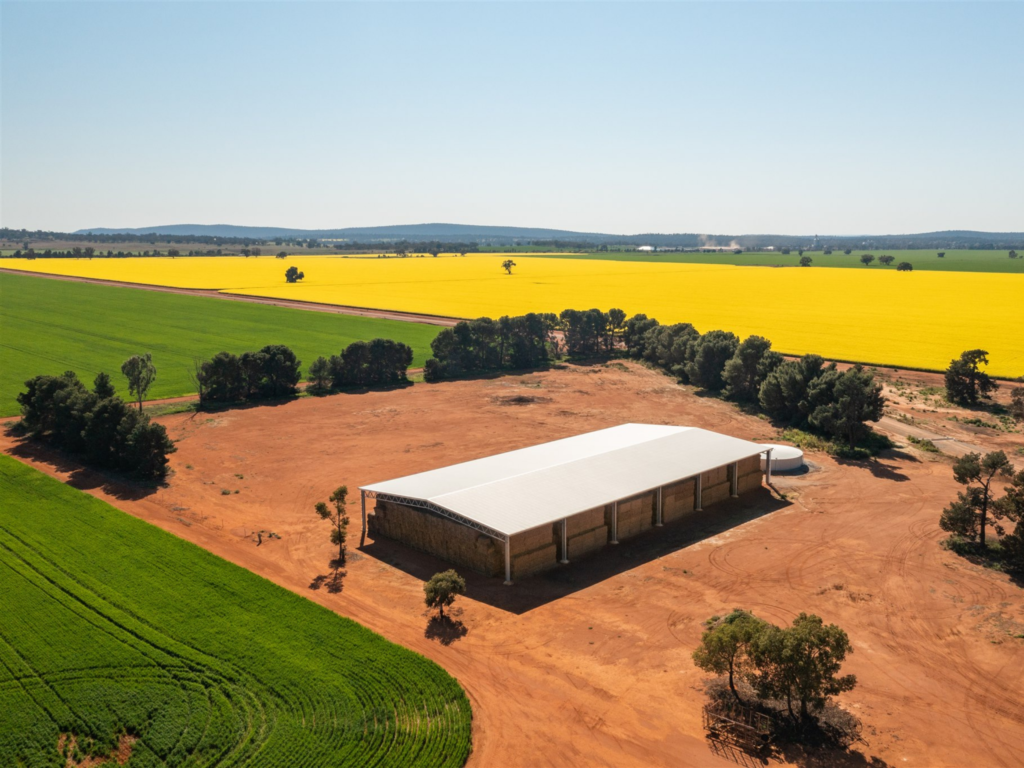
While many of these suggestions involve extending or adding to the shed in the future, there is one detail to get right the first time and that is height. Don’t skimp on height! Not only is increasing the height of your hay shed a cost-effective way to fit a few more bales in (provided it is safe!) but a hay shed cannot be made higher once it has been built.
For more ideas and suggestions on hay shed design and cost-saving, check out our article – What is the most cost-effective hay shed design?
Frequently Asked Questions
Here are answers to some of the other frequently asked questions when it comes to hay shed prices.
How much do canopies cost?
A canopy generally costs between $100 and $150 per square metre.
How much do fire designs for large hay sheds cost?
Once over 3500m², hay sheds require a fire engineer to design a fire suppression system for the building. This documentation can range in cost from $15,000 – $30,000 depending on several factors. Note: this price estimate doesn’t include the actual fire system or infrastructure.
We hope you have found this article on the cost to build a hay shed helpful for your project budgeting. If you have any other questions or if you would like a no-obligation quote, please don’t hesitate to reach out to us – we’d be happy to help! Otherwise check out our Learning Hub for more resources like this.

